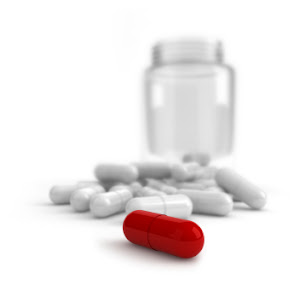The information below is to help ease the of FLU symptoms and to eliminate any guess-work when dealing with over the counter medications.
Headaches, body aches, fever, and flu-like symptoms Medications that reduce pain (analgesics) and fever (antipyretics) are used to relieve headaches, body aches, and fever. The three classes of analgesics/antipyretics that are available OTC are aspirin, acetaminophen, and nonsteroidal anti-inflammatory drugs (NSAIDs).
Some OTC products contain an analgesic/antipyretic as a single ingredient. Others combine an analgesic/antipyretic with a nasal decongestant, an antihistamine, or a cough suppressant. Products listed in the headaches, body aches, fever, and flu-like symptoms category contain an analgesic/antipyretic either alone or in combination with other ingredient(s) to treat cold/flu/allergy symptoms. Examples of products in the headaches, body aches, fever, and flu-like symptoms category include:
- Aspirin (plain aspirin, coated aspirin, or aspirin mixed with antacid): Aspirin Regimen Bayer Regular Strength, Extra Strength Bayer Plus Caplets, Bufferin Analgesic Tablets, Regular Strength Ascriptin, Ascriptin Enteric, and Alka-Seltzer Extra Strength.
- Acetaminophen: Tylenol Regular Strength Caplets and Tablets, Aspirin Free Excedrin Analgesic Caplets and Geltabs, Children's Tylenol Chewable Tablets, Elixir, and Suspension Liquid, and Junior Strength Tylenol Coated Caplets and Chewable Tablets.
- NSAIDs: Advil Caplets, Aleve Tablets and Caplets, Motrin IB Pain Reliever Caplets and Gelcaps, and Children's Motrin Drops.
- Aspirin plus a decongestant and/or cough suppressant: Alka-Seltzer Plus Cold and Cough.
- Acetaminophen plus a decongestant and/or cough suppressant: Tylenol Cold Medication Multi-Symptom Caplets and Tablets, Theraflu Flu and Cold Medicine, Actifed Cold and Sinus Caplets and Tablets, and Children's Tylenol Flu Liquid.
- NSAID plus a decongestant and/or cough suppressant: Advil Cold and Sinus Caplets and Motrin IB Sinus Caplets and Tablets.
Nasal congestion, sneezing, and runny nose
Nasal congestion, sneezing, and runny nose are common symptoms of a cold caused by a virus. The viruses that cause colds induce inflammation that increases the leakage of fluid from the blood vessels into the lining of the nose and even into the nose. This causes swelling of the lining of the nose, obstructing the flow of air, and a runny nose.
Symptoms of hay fever, or allergic rhinitis, are caused by allergens. Allergens are tiny particles that cause cells in the lining of the nose and the airways of the lungs to release histamine and other chemicals. Histamine and these other chemicals are responsible for the leakage of fluid, runny nose, sneezing, and nasal congestion, as well as the itching of the eyes.
Cold symptoms usually resolve in one to two weeks whether treated or not. Antibiotics have no effect on viruses, which are the cause of colds. However, bacterial infections that can follow viral infections, for example, infections of the ears and sinuses, may be treated with antibiotics. For the temporary relief of cold symptoms, plenty of oral fluids such as broth, chicken soup, and tea with lemon and honey and humidification of room air are safe remedies for people of all ages. Saline (salt and water) sprays and mists can also safely provide soothing moisture to dry, irritated nasal passages. In infants and young children, saline nose drops and clearing the nose with a nasal syringe can temporarily relieve nasal obstruction. Allowing infants and young children to sleep upright in car seats also improves the drainage of nasal secretions.
For short-term relief of nasal congestion in older children and adults, nasal decongestants can be used. Nasal decongestants are chemicals (for example, pseudoephedrine, oxymetazoline, etc.) that narrow the blood vessels in the nose, thereby preventing fluid from leaking and the lining from swelling. As a result, the lining shrinks and the nasal passages open. Nasal decongestants can be used topically within the nose (nasal spray, solution, or mist) or can be taken orally (tablets, caplets, or gelcaps). Topical nasal decongestants act faster than the oral decongestants but have a shorter duration of action. Thus, more frequent dosing will be necessary. Oral nasal decongestants frequently are combined with an antihistamine, a cough suppressant, or an analgesic in treating cold/flu/allergy symptoms.
The first step in preventing and relieving symptoms of allergy is to avoid the allergens. If avoiding allergens is not feasible or does not adequately control the allergic symptoms, antihistamines are commonly used to block the effect of histamines. Some of the antihistamines that are available OTC (diphenhydramine, chlorpheniramine, etc.) are called "first generation" antihistamines. These antihistamines have been in use longer, are less expensive, and are more sedating (more prone to cause drowsiness) than the newer, "second generation" antihistamines (fexofenidine, loratidine, etc.), which have minimal sedative effects. OTC antihistamines frequently are combined with a nasal decongestant and sometimes also with a cough suppressant or an analgesic. Generally, antihistamine preparations are not effective for cold symptoms.
Examples of products in the nasal congestion, sneezing, and runny nose category include:
- Saline solutions as nose sprays or mists: Nasal Moist Solution, Pediamist, Afrin Moisturizing Saline Mist, and Afrin Menthol Moisturizing Saline Mist. Note: Afrin nasal sprays can lead to a rebound worsening of nasal congestion and become habit-forming, especially if overused.
- Topical nasal decongestants as nasal sprays, mists and drops: Afrin Regular Nasal Spray, Afrin Nose Drops, Duration 12 hour Nasal Spray, Neo-Synephrine Nasal Sprays, and Vicks Vapor Inhaler.
- Oral nasal decongestant: Drixoral Nasal Decongestant.
- Oral antihistamine: Benadryl Allergy Chewables and Chlor-Trimeton Allergy Tablets.
- Oral nasal decongestant combined with an oral antihistamine (may also contain an analgesic): Actifed tablet, Chlor-Trimeton Allergy/Decongestant Tablets, Coricidin "D" Decongestant Tablets, Contac Continuous Action Nasal Decongestant/Antihistamine12 Hour Capsules, Dimetapp Tablets and Liqui-Gels, Sinutab Sinus Allergy Medication Maximum Strength Formula Tablets and Caplets, Sudafed Cold and Allergy Tablets, Tylenol Flu Nighttime Medication Gelcaps, Allegra Tablets and oral suspension, Claritin tablets and RediTabs, Claritin-D, and Vick's NyQuil Hot Therapy.
Cough
A cough is a common symptom of viral respiratory infections and allergies. A cough can also be caused by other conditions, some of them serious. For example, a cough can be a symptom of asthma, acid reflux into the esophagus (gastroesophageal reflux disease or GERD), sinusitis, postnasal drip, bronchitis, cigarette smoking, pneumonia, tuberculosis, hypersensitivity pneumonia (inflammation of the lung from exposure to certain environmental chemicals), and even lung cancer. Therefore, a persistent cough or a cough that is associated with chest pain, fever, weight loss, or blood-tinged or discolored sputum should be evaluated by a doctor.
There are three types of cough medications available OTC for the temporary relief of cough due to a cold. They are oral cough suppressants, oral expectorants, and topical (externally applied) medicines.
Oral cough suppressants
Codeine and hydrocodone are narcotic oral cough suppressants that require a doctor's prescription. Dextromethorphan is an oral cough suppressant that is available OTC. Dextromethorphan is chemically related to codeine and acts on the brain to suppress cough, but does not have the pain-relieving and addictive properties of codeine. Diphenhydramine is another non-narcotic medication that acts on the brain to suppress cough. It is also an antihistamine.
Dextromethorphan and diphenhydramine can be used to relieve a dry, hacking cough. They are not generally used to suppress a productive cough (when sputum is coughed up). Suppressing a productive cough impairs the clearing of secretions and mucous from the airways, which is generally undesirable. However, cough suppressants are sometimes used to suppress even productive coughs if they are especially bothersome and prevent restful sleep.
Oral expectorants
Guaifenesin is an oral expectorant that is believed to increase the leaking of fluid out of the lung tissue and into the airways. This action thins (liquefies) the thick mucous in the airways and facilitates the clearing of the mucous by coughing. Clearing of mucous from the airways decreases cough.
Topical medications
Camphor and menthol are topical cough medications. Camphor and menthol ointments are rubbed on the throat and the chest as a thick layer. The anesthetic action of their vapors is believed to relieve cough. They are also available as products for steam inhalation. Menthol is also available as lozenges and compressed tablets.
Examples of products in the cough category include:
Cough suppressants: Benylin Adult Cough Formula, Buckley's Mixture, Diabe-Tuss DM, and St Joseph Cough Suppressant for Children and Delsym (effective for 12 hours).
Expectorant: Hytuss, Robitussin and Mucinex.
Topical cough medicines: Hall's Menthol-Lyptus Cough Supp. Drops, Mentholatum, Vick's VapoRub, and Vick's Vaposteam.
Cough suppressant plus an expectorant and other cold/flu/allergy ingredients: Alka-Seltzer Plus Cold and Cough, Alka-Seltzer Plus Cold and Flu, Comtrex Deep Chest Cold & Congestion Relief, Coricidin HBP Cough and Cold Tablets, Dimetapp Cold and Cough Liqui-Gels Maximum Strength, PediaCare Cough-Cold Liquid and Chewable Tablets, Robitussin Maximum Strength Cough and Cold, TheraFlu Flu Cold and Cough Medicine, and Triaminic AM Cough and Decongestant formula.
Since many of these combinations also contain an antihistamine, a decongestant, and an analgesic in addition to the cough suppressant and expectorant, they also provide relief of nasal congestion, sneezing, fever, and aches.
In October 2000, an advisory panel of the U.S. Food and Drug Administration (FDA) recommended that phenylpropanolamine (PPA), an ingredient contained in many OTC and prescription cold medications as well as weight loss products, be classified as unsafe because of reports of stroke associated with the this ingredient. Many companies voluntarily chose to reformulate their products to exclude phenylpropanolamine. The FDA is taking steps to remove phenylpropanolamine from all drug products and has requested that all drug companies discontinue marketing products containing this ingredient.
Sore throat and other symptoms
Viruses are the most common cause of sore throat. A sore throat caused by a cold virus usually resolves in one to two weeks without treatment. On the other hand, a sore throat caused by the streptococcus bacterium (strep throat) should be treated with antibiotics to prevent damage to the heart valves. Generally, streptococcus bacteria cause a more severe sore throat and a higher fever than viral sore throats. Sneezing, runny nose, and cough more frequently accompany sore throats due to a cold virus, rather than streptococcus infections. Sometimes, a throat culture is necessary to establish the cause of the sore throat.
Medications that are available OTC for the temporary relief of sore throat due to the common cold usually contain anesthetics such as benzocaine and dyclonine or menthol and come in the form of lozenges, gargles, and sprays. Children often prefer Popsicles, ice cream, yogurt, pudding, smoothies, or other cool/soft foods in lieu of traditional medications. Aside from their analgesic effects, these foods also provide some nutritional benefit.
Examples of sore throat medications: Cepacol Sore Throat Maximum Strength and Sucrets sore throat lozenges.
What about vitamin C and zinc?
Vitamin C is an antioxidant. In the 1970s, Linus Pauling proposed that vitamin C can reduce the incidence and severity of common cold. To date, there is no conclusive evidence that mega doses of vitamin C prevent colds or decrease the severity and duration of cold symptoms. The article on vitamins further discusses the use of vitamins and antioxidants in preventing diseases.
Zinc has been proposed as an antiviral medication. Some studies suggest that the frequent administration of zinc lozenges may reduce the severity and duration of cold symptoms if started within hours of the onset of cold symptoms, while other studies have not supported this conclusion. No studies have conclusively demonstrated the effectiveness of zinc in children either.
Important considerations for the safe use of OTC products
To use OTC products safely, it is important to understand (1) their side effects, (2) their effects on other underlying medical conditions such as diabetes mellitus, high blood pressure, asthma, and other conditions, (3) their interactions with other prescribed medications such as antidepressants, blood thinners, and high blood pressure medicines, and (4) the product's limitations.
The following guidelines are provided to help consumers make more informed choices when selecting OTC products:
- Always read the labels and know the ingredients in the products. Never take more than the recommended dose without checking with your doctor first.
- Do not use aspirin-containing medicines for children and teenagers with influenza, chickenpox or other viral illnesses. Rare cases of Reye syndrome have been associated with the use of aspirin in this population. Reye syndrome is a serious illness characterized by liver damage, vomiting, and sometimes coma. It has a 50% mortality rate, and those who survive can be left with permanent brain damage. Therefore, acetaminophen-containing products are recommended for children with fever. NSAIDs may be used in children over six months of age.
- Aspirin and NSAIDs can cause ulcers and increase the risk of bleeding, and should be avoided by people with known ulcer disease or certain blood diseases. People who are scheduled for elective surgeries should inform their doctors that they are taking aspirin or NSAIDs.
- A true aspirin allergy is rare. Aspirin allergy consists of hives, occasionally difficulty breathing, and rarely shock, within three hours of taking aspirin. Aspirin allergy is most common among individuals who have asthma, urticaria, and nasal polyps. Individuals with aspirin allergy should also avoid NSAIDs because they are chemically similar to aspirin.
- Aspirin can cause complications during pregnancy and should be avoided during pregnancy.
- Aspirin can increase the effectiveness of blood thinning by Coumadin and may increase the risk of bleeding.
- Topical (sprays or mists) nasal decongestants act more quickly than oral nasal decongestants. However, the effects of topical nasal decongestants are short-lived. Topical nasal decongestants should be used for only three to five days at a time since more prolonged use can lead to rebound congestion with worsening nasal congestion. Patients with rebound congestion complain of stuffy nose despite frequent applications of the nasal decongestant. Treatment of rebound congestion involves the slow withdrawal of the nasal decongestant (one nostril at a time) and applying saline nose sprays or drops to provide moisture.
- Nasal decongestants can aggravate high blood pressure and should not be used in people with uncontrolled high blood pressure without permission from the doctor.
- Oral nasal decongestants can interfere with the action of a class of antidepressants called MAO inhibitors.
- Oral nasal decongestants can affect diseases such as hyperthyroidism, diabetes mellitus, and coronary artery disease. Oral nasal decongestants and antihistamines can also precipitate urinary obstruction in patients with enlarged prostates (prostate hypertrophy or BPH). Patients with these conditions should consult their doctors before using OTC products.
- OTC antihistamines can cause drowsiness. People taking antihistamines should avoid driving or performing activities that require alertness. They should also avoid alcohol and other sedatives.
- Some antihistamines can cause excessive drying of secretions, making it difficult to clear secretions. The accumulation of dried secretions in the airways can aggravate breathing difficulties in people with chronic bronchitis and emphysema.
- Infants and young children are sensitive to the side effects of antihistamines and nasal decongestants. They can become irritable, restless, or drowsy with these medications. Occasionally, hallucinations and psychosis can occur. Therefore, the parents or caretakers of infants and young children with cold or allergy symptoms should consult their pediatrician before using any of these products. Recent concerns by the FDA suggest that young children should not take many of the commonly used cold and cough medicines.
Avoiding outdoor allergens
- People who are sensitive to outdoor allergens should follow pollen counts and avoid outdoor activities when pollen counts are high.
- Keep the house and car windows closed and use air conditioners.
- People who are allergic to grass should avoid playing in grassy areas during spring and early summer.
- Individuals who are allergic to outdoor molds should not mow the grass, rake leaves, or disturb compost.
Avoiding indoor allergens
- Placing pillows, mattresses, and box springs inside airtight plastic covers that are cleaned weekly can reduce house dust mite exposure. Avoid down pillows.
- Removing dust-collecting furniture such as bookshelves, TV cabinets, stuffed toys, rugs, and other dust-catching fabrics from the bedrooms can also reduce house dust mite exposure.
- Keeping pets outside or at least keeping them away from the bedroom of an allergic individual can help decrease animal allergen exposure. Washing cats frequently can help decrease cat allergens. It may be necessary to remove the cat from the household.
- Venting moist areas such as bathrooms, kitchens, and basements can reduce indoor mold exposure.
- HEPA air filtration devices (freestanding or installed in the air heating or cooling system of the home) can decrease the amount of pollen, mold spores, and animal allergens in the air. HEPA filtration devices installed on vacuum cleaners can reduce the circulation of house dust mite feces while vacuuming.
- Wear masks while vacuuming or dusting.
This information was sourced from
www.medicinenet.com

OVER THE COUNTER PRODUCTS
 Take the temperature readings from the mouth (hold under tongue for 2-3 min).
Take the temperature readings from the mouth (hold under tongue for 2-3 min).










